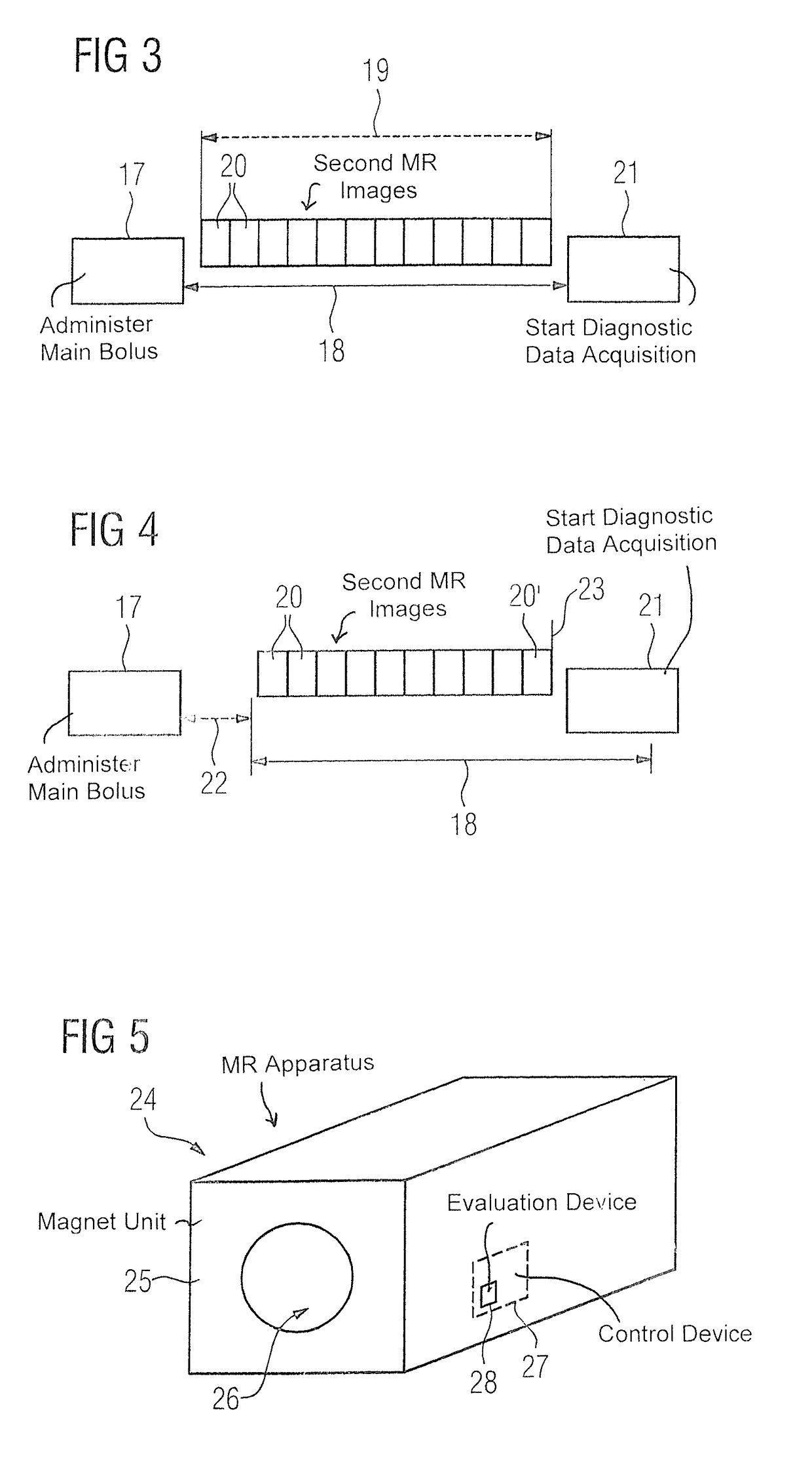Method and magnetic resonance apparatus for image acquisition control with administration of contrast agent
a technology of contrast agent and magnetic resonance apparatus, which is applied in the field of magnetic resonance apparatus for image acquisition control with can solve the problems of examination having to be shifted, image data set overall poor quality, and too early administration of contrast agent, etc., and achieve the effect of increasing image quality
- Summary
- Abstract
- Description
- Claims
- Application Information
AI Technical Summary
Benefits of technology
Problems solved by technology
Method used
Image
Examples
Embodiment Construction
[0038]FIG. 1 explains a problem underlying the present invention in an example of a test bolus measurement according to the prior art. This involves the acquisition of an image data set with a magnetic resonance device, wherein it is thereupon sought that the k-space center coincides in agreement with a peak time in which the concentration of the contrast agent in the acquisition area of the image data set is highest. A smaller amount of contrast agent—what is known as the test bolus—is consequently administered in the test bolus method (as it is known from the prior art) than in the main bolus. First magnetic resonance images from which the peak time can be determined are acquired using a magnetic resonance sequence of high temporal resolution. With these images, a wait period is calculated for the main bolus with the measurement of the k-space center in that the time from the start of the acquisition protocol for the image data set up to the measurement of the k-space center is su...
PUM
 Login to View More
Login to View More Abstract
Description
Claims
Application Information
 Login to View More
Login to View More - R&D
- Intellectual Property
- Life Sciences
- Materials
- Tech Scout
- Unparalleled Data Quality
- Higher Quality Content
- 60% Fewer Hallucinations
Browse by: Latest US Patents, China's latest patents, Technical Efficacy Thesaurus, Application Domain, Technology Topic, Popular Technical Reports.
© 2025 PatSnap. All rights reserved.Legal|Privacy policy|Modern Slavery Act Transparency Statement|Sitemap|About US| Contact US: help@patsnap.com



